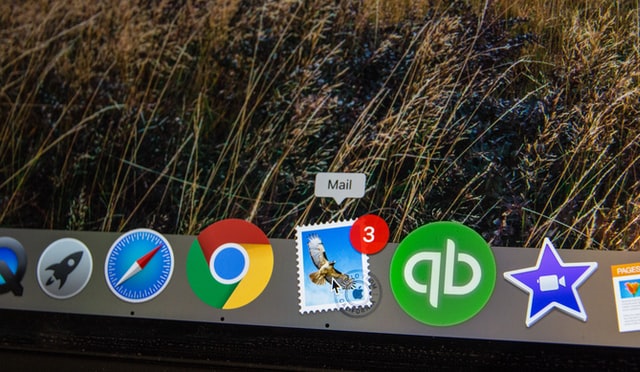 Think about the email newsletters you received in the past week…
Think about the email newsletters you received in the past week…
How many of them were you excited to open, and how many of them, well… sucked?
Subscriber frustrations like these lead many people to conclude that email marketing has been overplayed as a promotional technique.
But those on the fence would be wise to look to New York Times contributor David Carr, who recently wrote a compelling article that dismissed the idea that email marketing is dead.
According to Carr, email marketing is still very effective – if it’s done properly.
Additional research from McKinsey shows that emails are 40 times more likely to convert than Twitter or Facebook, but only if you write effective newsletter copy as part of a focused digital marketing strategy.
Unsurprisingly, the brands that are most successful when it comes to email marketing are those that make a concerted effort to understand their readers, engage with them and test the results of their campaigns.
You can improve your own results – and deliver messages that don’t suck – by following our recommendations shared in this article:
How Do You Make Your Emails Successful?
In our experience, email marketing campaigns fail for one of two reasons. Either structural elements of the campaign – for example, how frequently newsletters are sent – make messages less effective than they could be, or the content included in them just plain sucks.
Let’s tackle these structural issues first, before jumping into issues of content creation later on in this article…
Unfortunately, if your emails aren’t constructed properly, you risk losing leads or even destroying your brand’s credibility. So what should you do? Here are a few things to keep in mind:
Choose Your Email Marketing Provider Carefully
One of the first things you need in order to run a subscription-based email newsletter is an email marketing service.
It’s tempting to try and cut corners by mailing your list from a free Gmail or Yahoo account. But this strategy has some major weaknesses.
Not only do free email providers lack the design, segmentation and reporting features offered by professional email marketing services, their deliverability rates can be dreadful.
As a result, you’re far better working with one of the services below when creating your email newsletter:
Carefully evaluate each of these offerings, as their rates depend on a number of factors, including the features you want and the number of subscribers you anticipate enrolling.
As an example, the MailChimp free account may sound appealing until you realize that it does not include autoresponder messages. Since nearly all businesses will want to take advantage of the power of automatically sending messages, this can be a deal-breaker.
Also, a quick note about opt-ins…
Some professional email marketing services require single opt-ins, which means that potential subscribers need only fill out a form on your website to be added to your mailing list. Others require double opt-ins, in which subscribers must also click a link in a confirmation message after filling out your forms.
Single opt-in lists tend to have more subscribers, since requiring an extra step will cost you some conversions. Double opt-in lists, however, are better at protecting your business from spam complaints, so choose the option that’s best for you before signing up with any of the services listed above.
So which one is right for you?
Well, we can’t give you a conclusive answer that will apply to every business. Look to see what your competitors are doing in order to get an idea of what’s standard in your industry.
Don’t Sell Prematurely
Now that your email marketing program is set up, let’s talk about the content of your messages…
Whatever you do, don’t start a series of email blasts or autoresponder messages with a sales pitch!
Remember that today’s consumers are especially sensitive to being sold to. If you begin your relationship with a sales pitch, you’ll find it hard to build the trust needed to keep prospects opening up your messages in the future.
It takes time to build a relationship and create trust with your readers. Although it’s tempting to cash in on your readership, hold off promoting anything until your readers are really ready to buy.
How do we do that at Louder.Online? One strategy we use frequently with our clients is the “4-1-1” rule. Although this rule is typically used for social media promotions, we’ve adapted it to email marketing according to the following schedule:
- For every four educational or informative email messages, we send
- One message promoting a helpful external resource and
- One message promoting our clients’ products.
To see how this might play out in the real world, suppose we’re working with an auto parts retailer. When helping him to craft email marketing messages, we might suggest the following schedule:
- Monday – “Is your care safe for summer? Free maintenance tips inside”
- Tuesday – “CNN just published a list of reliable cars – is yours on it?”
- Wednesday – “The biggest mistake summer drivers make”
- Thursday – “Summer exclusive! Act now and take 20% off”
- Friday – “7 steps to prepping your car for a summer getaway”
- Saturday – “Car care myths you might be falling victim to”
In this mock schedule, Tuesday’s message references a helpful external resource that readers might find useful, while Thursday’s includes details on a special promotion.
All other messages in this series would contain helpful, actionable bits of information that subscribers could easily implement in their own lives.
Balancing messages in this way gets subscribers in the habit of opening messages – as the bulk of them contain free, useful content – which, in turn, helps boost their exposure to the occasional sales message.
Pay Attention to Your Mailing Times and Frequency
Now, in the sample email marketing schedule above, we’ve set the mailing frequency to six days a week.
But is that really the best sending schedule for your business? And should you really send messages every day of the week, or are there days on which you’ll average higher engagement overall? The answers to these questions are, unsurprisingly, it depends…
Here’s what we know about the best times to send email marketing messages:
- According to MailChimp, Tuesday and Thursday are the two most popular days to send out email newsletters. Many businesses avoid Mondays, when subscribers are swamped with messages, and Fridays, when they’re looking to get out of the office as quickly as possible.
- Additional MailChimp data suggests that a 2pm local send time corresponds to the strongest open rates, although 9-11am and 1-3pm are popular times as well.
- General industry wisdom suggests avoiding nights and weekends, when subscribers are less likely to be looking at their inboxes (23% of emails are opened within 60 minutes of their receipt).
But here’s where things get complicated…
Advertising blog Wordstream decided to test their own send and open data against these standard recommendations and found that:
- Their highest open rates – over 25% clicks – occurred for messages sent on Thursdays between 8-9am.
- Their lowest open rates – less than 5% opens – occurred when messages were sent on Tuesdays and Wednesdays between 8-10am.
In Wordstream’s case, following the baseline industry recommendations that give Tuesday as a “best send” day would have been disastrous – causing them to miss roughly 20% of their potential opens.
With this in mind, the answer to the question of appropriate days and times for your message is to start by mailing according to industry-agnostic best practices, but to pay attention to your own data.
If you find that your email marketing messages aren’t performing up to your expectations, shake up your tests and see if your results change. Really, the best expert on your audience is you!
Now, as to the question of how frequently to send your messages, we have fewer established recommendations to look to for guidance.
We do know, however, that sending too often can kill your open rates. According to business development experts from Chadwick Martin Bailey, 69% of consumers unsubscribe from newsletters because they are sent too frequently.
So while you’ll need to set a specific mailing frequency on your own, you’ll need to keep the following guidelines in mind in order to find a balance between over-sending and sending so infrequently that you become irrelevant:
- Stay consistent. Emailing according to a consistent schedule has two major benefits. First, it gets people in the habit of expecting to see your messages, potentially increasing your open rates. But second, it builds trust with your readers. If you say you’re going to email twice a week, but then send four messages, you diminish the value of your word.
- Pay attention to industry expectations. Keeping with our example auto parts retailer, if our client was the only business in his space sending six messages a week, while his competitors were all sending 2-3, we might advise dialing back his frequency in order to avoid alienating subscribers.
- Keep available internal resources in mind. Working with an agency like Louder.Online makes it possible to send as many messages as you like, whenever you like. But what if you’re running your email newsletter internally? If you don’t have an employee with the free time available to draft, proof and send out a daily message, don’t commit to mailing your list once a day!
Again, our recommendation to set a schedule and test your results holds true when it comes to mailing frequency, but with one major caveat.
If you establish a mailing schedule and then decide – based on the data you’ve gathered – to change up your frequency, be sure to communicate this change to your audience in order to maintain their trust and interest in your messages.
Use Relevant Subject Lines
Can you guess what one of the most important elements of your email marketing campaigns is?
Give up? It’s your subject lines!
According to data from Convince and Convert, 35% of email recipients read an email based purely on its subject line.
Your subject line is the first experience your readers have with your newsletter. If you want to get them to click in, your subject line must make it immediately clear that the content of your message will meet your subscribers’ needs.
Wordstream comes to the rescue again, with nine subject line templates you can adapt to your own needs in order to meet this goal:
- The Simple, No Nonsense Email Subject Line – For example, “Your order is being processed”
- The Funny Email Subject Line – For example, “Do Gamers Dream of HTML5 Sheep?”
- The Controversial or Shocking Email Subject Line – For example, “Why Your 5-Year-Old is More Digital Than Most CMOs”
- The Single Word Subject Line – For example, “Panic”
- The Numbered List Subject Line – For example, “10 jaw-dropping drift videos on YouTube”
- The Personalized Subject Line – For example, “Aaron, Sydney burger specials just for you!”
- The Question or Punctuation-Heavy Subject Line – For example, “Final hours! Will you save 50%?”
- The Scarcity Subject Line – For example, “Ends Today! Hurry, this is your last chance to save 50% on all jeans…”
- The Mysterious Subject Line – For example, “It’s all over December 25th…”
If your own email marketing messages seem a bit blah, putting any of these subject line templates into play should help boost your open rates by engaging your subscribers.
Use Effective Power Words in Subject Line (But Don’t Overdo It)
Another easy tweak you can make to your email messages is to incorporate so-called “power words” into your subject lines.
Some words are more likely to entice readers to click your email, so choose them wisely. Here are some findings that can increase your click-through rate:
- The word “secret” makes readers feel like they are receiving a great deal that isn’t available to the general public.
- Readers are more likely to click emails if their names are used in the subject line.
- Superlative words, such as “awesome” or “spectacular,” tend to resonate well with most readers.
- Readers will be more likely to click emails if you use words that evoke curiosity.
Using powerful copy in your subject lines is the best way to get subscribers to click them, but make sure that you don’t sound too pushy, as roughly 69% of readers click the spam button based solely off the subject line alone.
Striking the right balance balance between promotional and intriguing – without being spammy – is essential when it comes to creating a sustainable email newsletter campaign.
Format for Readability
Think about email newsletter messages you’ve received in the past. Have you ever encountered messages that were difficult to read – maybe those that didn’t render correctly on your mobile device or that didn’t use sufficient contrast between background and text colors?
Your subscribers won’t keep reading your newsletters if you make it difficult for them, so keep the following tips in mind:
- Use a font that is easy to read, such as Courier 10 pt. or Arial 12 pt.
- Try to limit the number of characters on any given line to 60 characters
- Don’t use more than two or three sentences in a paragraph
- Offer both HTML and plain text versions
- Use images that enhance your text without overpowering it
Enhancing readability is one of the easiest ways to improve the success of your email newsletter. So before you click the “Send” button, make sure all that great content you’ve put together can be easily read and understood by your subscribers.
On a related topic, plenty of people ask us whether HTML or plain text email messages perform better. Ultimately, there’s no cut-and-dried answer that applies to all businesses, due to one important factor:
If you don’t have somebody on your team who can work with HTML designs, you won’t be successful with them!
So if you’ve got a talented designer on your team (or an agency like Louder.Online), definitely take advantage of the benefits of an engaging, well-designed image-based message template.
And if you don’t? Don’t sweat it!
Plenty of businesses get great results with plain text messages alone. As it turns out, the success of your email marketing campaign is as much about the content of your messages as it is their visual appeal.
What Belongs in Your Email Newsletters?
Running a successful email newsletter isn’t just about pumping out legible content with enticing subject lines. The content you include in your messages is what will keep readers opening your emails again and again in the future.
Here’s what you need to know about creating content for your successful email newsletter…
Keep Newsletters Quick and Concise
Your subscribers were generous enough to open your email – so don’t waste their time! Instead, keep your newsletter quick and to the point.
The ideal length of your newsletter will, obviously, vary by frequency and subject matter. But as a general rule of thumb, condense daily messages to a single page-view and weekly issues to five pages or less.
Of course, as with all of our recommendations, you’ll want to test these guidelines for your specific audience. However, these ideal lengths should provide a good starting point for your own campaigns going forward.
Take a Personalized Approach
Many marketers take a very detached tone when writing their newsletters, since they’re sharing their message with dozens, hundreds or even thousands of people.
But guess who wants to read messages that are written like this? Nobody!
It’s far better to write emails in a conversational tone and use any personalization techniques that are available to you to help readers feel a genuine connection with you and your content.
Any of the following techniques may help you achieve this purpose:
- Always use the subscriber’s first name as a starter – but don’t be cheesy about it. Use first names as if you were speaking directly to the person. Use them too often and you risk coming across like a used car salesman!
- Create different versions of your newsletter for different demographics, based on your subscriber profiles.
- Use first and second person pronouns to make readers feel as though you’re speaking directly to them. A study from Experian Marketing Services found that conversions from personalized emails are 500% higher, but 70% of brands fail to use them.
Don’t have first names or subscriber profiles? Adjust your opt-in forms so that you’re capturing this important information and take advantage of any segmenting tools your email marketing provider offers.
The more you know about your subscribers, the better targeted your messages can be.
Always Cater to Reader Needs
Your readers subscribed to your email newsletter because they believed that you had the ability – in some way, shape or form – to make their lives better. So as you plan how emails will fit into your overall content marketing strategy, keep their needs (not your desire to make money) at the front of your mind.
Of course, if you want to inspire your readers to click in and read your newsletters, you’ll need to start by thoroughly understanding their challenges. Only then can you offer the helpful information they need to solve their problems.
Here are a few ways you can go about doing this…
- Solicit feedback from readers to learn more about their challenges and the type of content they want covered in newsletters
- Provide clear, actionable tips in each message to help subscribers overcome different problems
- Make sure any products you promote are carefully targeted to your readers and will help them solve their problems in some way
Too many brands use their email as a way to get their voice out, rather than focusing on solving their readers problems. Your conversions will be much higher if you remember that your newsletter is about your subscribers and their needs – not about your desires!
Plan Your Email Newsletter Campaign Carefully
Email is one of the most effective ways to engage with your followers and boost your conversions, but many brands struggle to use it effectively. Use the tips above to create an appropriate editorial calendar and mailing strategy that will get results in your industry.
Do these tips support your experience with email newsletter campaigns? Share your thoughts in the comment section below!
Image: Flickr




